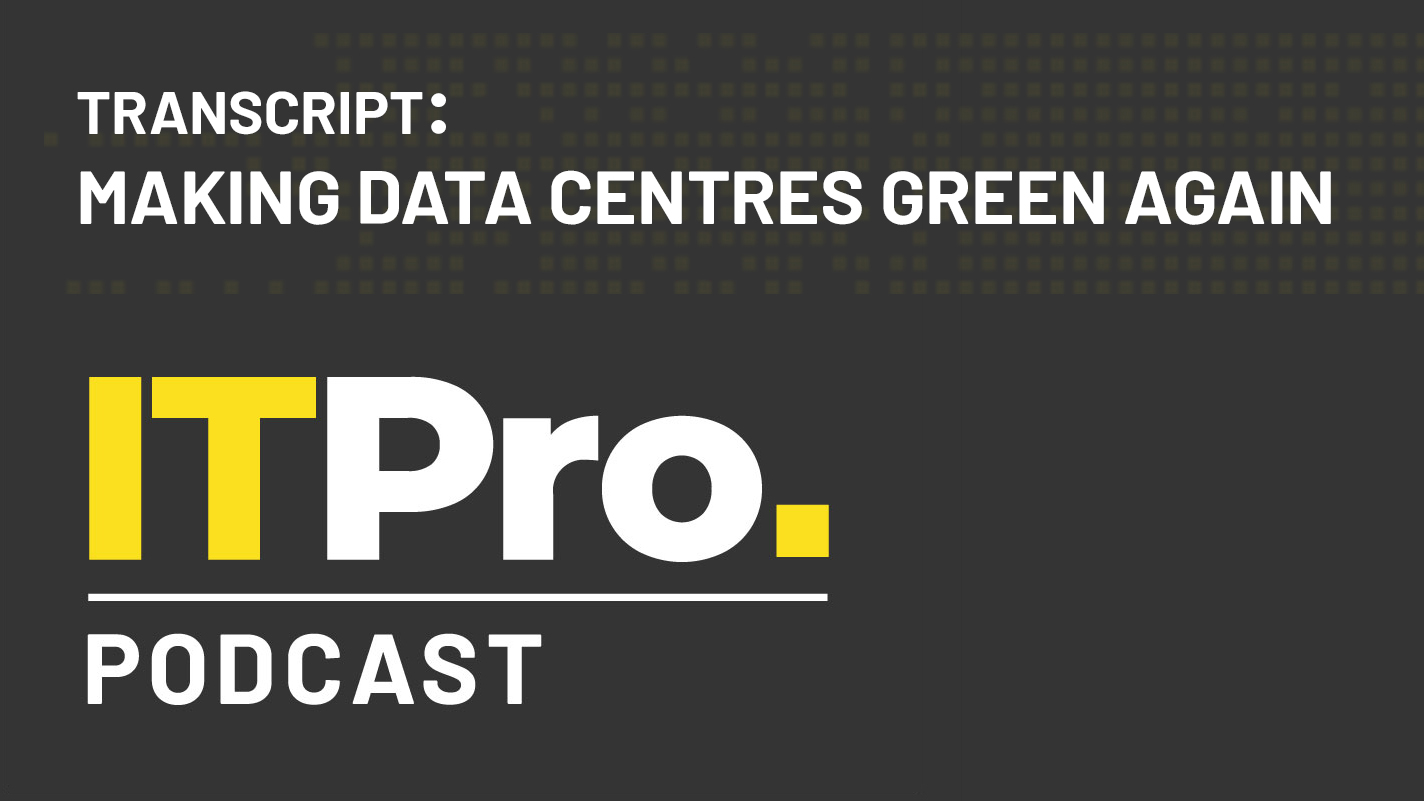
This automatically-generated transcript is taken from the IT Pro Podcast episode ‘Making data centres green again'. To listen to the full episode, click here. We apologise for any errors.
Adam Shepherd
Hi, I'm Adam Shepherd.
Zach Marzouk
And I'm Zach Marzouk,
Adam
and you're listening to the IT Pro Podcast, where this week we're asking, is it easy being green?
Zach
Our planet is on the path to a climate catastrophe as more than two centuries of growing industrialization continue to increase the amount of pollutants and greenhouse gases in the Earth's biosphere. This problem isn't just the result of factories and coal mines though, the tech industry is also responsible for a significant amount of carbon emissions.
Adam
Cryptocurrency mining has sustained major criticism for its devastating environmental impact in recent years. And according to some estimates, training a large AI model produces five times as much carbon as one car produces over the course of a human lifetime. In fact, data centres are believed to contribute roughly as much to carbon emissions as the entire global air travel industry pre COVID.
Zach
There are, however, ways to mitigate the environmental damage caused by IT infrastructure. And we're joined today by Matt Pullen, Executive Vice President and Managing Director of data centre operator CyrusOne, to discuss how to build a green data centre and the operational benefits that companies can expect from doing so. Matt, thanks for being with us.
Sign up today and you will receive a free copy of our Future Focus 2025 report - the leading guidance on AI, cybersecurity and other IT challenges as per 700+ senior executives
Matt Pullen
You're welcome. It's good to be with you.
Adam
So, Matt, to start us off with, can you tell us a little bit about what CyrusOne does?
Matt
Sure. So CyrusOne is generally recognised as the third largest provider from a global perspective of colocation data centres. We operate approximately 50 data centres across the world, including 12 data centres in Europe in the key gateway markets of London, Frankfurt, Amsterdam, Paris, and Dublin.
Adam
So what does the environmental impacts of the average datacenter look like?
Matt
That's an interesting question. And I'd probably want to sort of set the scene by, if you like, challenging some myths around the the energy consumption and electricity consumption of data centres. So taking the UK as an example, data centres consume effectively 2% of the electricity, and about 0.5% to 1% of the energy of the UK. And if you compare that to the whole of the transport sector, for example, the transport sector consumes about 25% of the UK's total energy. So I do think there's a there's a little bit of a myth about the impact that data centres are having. The other point I would make is that the Internet doesn't run by magic. It, it does consume energy, and in terms of the energy consumption of the data centres, and the networks as part of the total energy consumption of data, networks and data centres consume approximately 50% with the other 50% being consumed by devices, including smartphones. And that's a really important point to make when people are concerned about data centres, yet they're getting in their car to go down to the shops, and they're, they're filming whatever they're filming on their, on their devices, and then streaming.
Adam
I mean, that's, that's a fair point, I would sort of counter that by saying there isn't that much that the average, say smartphone user can do to reduce the amount of energy their smartphone consumes. Whereas, you know, there are measures that can be taken by data centre operators to, you know, limit the amount of the amount of energy being consumed by datacenter operations.
Matt
And, Adam, I completely agree with that. And so, you know, the industry, particularly now that it's at a scale, where it's, it's becoming far more understood, and certainly far more on the radar, is doing everything you possibly can to improve its impact on the planet. And I can I can go into those into those things that we're doing, I'd probably again set the scene by saying data centres in the past have been very inefficient. I'll use some data centre vernacular for which I apologise but you know, on premises data centres in the past have been operating at PUEs of sometimes you know, four or five, which means that for every amount, amount of energy that's being used by a server in terms of compute or storage, there's another three, four or even five times the energy being used to run the facility, particularly run the cooling systems etc. At that level of inefficiency, you would find that data centres in terms of consumption of global electricity and global energy would scale very, very, very rapidly. So the main thing that the industry's been doing, partly by design, partly by circumstance, is that data centres are getting bigger, but much, much, much more efficient, and accelerated by the pandemic, but also just accelerated by technological advancements, what we're seeing is a movement from on premise data centres to the cloud. And the cloud, in this case is not a white fluffy thing up in the sky. Cloud effectively sits in data centres. And what we're finding is that as workloads move away from on premise data centres to big cloud data centres, those big cloud data centres are at such a scale, and they're using modern technology, whereby PUEs are falling and falling with, on average, the UK, recording that big commercial data centres' PUEs probably down at 1.7, on average. And then I can go into what we're trying to do as an industry to self regulate to push those P waves down to 1.3 in cooler climates and 1.4 in warmer climates. And that's that's a massive issue, because what it's meaning is that rather than seeing energy, and electricity consumption, increasing at rates of say, 25%, over five years, what we're actually seeing is the impact being closer to 4 to 6%, over a five year period, which is which is great news.
Zach
How can data centre operators reduce the carbon footprint of their facilities?
Matt
So that's, that's really interesting Zach, and I suppose what I do is go to, you know the framework of what the Climate Neutral Data Centre Pact is doing. And just for reference, the Climate Neutral Data Centre Pact comprises all the major cloud companies, all the major colocation operators, data centre operators, like ourselves, and also the national trade associations, about 20 of them. So there's over 100 signatories to the Climate Neutral Data Centre Pact, and CyrusOne was, was a founding member and a signatory. And what we're doing is we're, we're really following the European Green Deal, where Europe wants to be Climate Neutral by 2050, as part of that Europe wants data centres to be Climate Neutral by 2030. And what we're doing is we're pursuing really five pillars in that pursuit. So we're looking at energy efficiency, which is all about the PUE, and setting low PUE targets. Clean energy, which is all about moving to renewable sources of energy. A big agenda point around the third pillar is water conservation, and making sure that we're consuming far less water, then looking at the circular economy. So basically, recycling materials in data centres, and then looking at circular energy systems. And in particular, looking at using the heat that data centre produce to do things like provide heat to municipal heating systems. So heating houses.
Adam
Yeah, there's a number of really interesting elements to that, I think, in terms of the the steps that data centre operators are trying to take, in terms of things like bringing down the PUE numbers, and in terms of reducing of water wastage, and things like that - can you talk through some of the measures that organisations are taking in a kind of practical sense?
Matt
Yeah, so in a really practical sense, I'll kind of described what's happened over the last few years. So going back a few years, the major drive was to lower PUE. Because, as the industry scales so significantly, you know, it's, it's not just the impact on the planet, but also it's, it's a natural drive towards efficiency. And I kind of make the point that this is this this is a, an, the next phase of the Industrial Revolution. And interestingly, you know, it's been the private sector that's really been funding the infrastructure for the digital economy. So there's obviously a drive in the private sector to be as efficient as possible. So the focus was on PUE, but, of course, to bring PUEs down, quite a lot of new cooling technology emerged. Indirect adiabatic cooling technology for example, which which uses water basically, uses water mist to make the cooling process more efficient, and therefore bring the PUE down. Now, the problem with that is that, you know, water is such a scarce commodity. And, in parallel, technologies have been emerging, more standard cooling technologies, closed-loop chilled water systems, for example, that don't result in the net use of water. And so the industry has been moving away from those sort of water-inefficient systems to the technologies which still maintain very low PUE but don't don't impact in such a way water consumption, then obviously, there's all sorts of measures that you can take in terms of building design, to you know, to capture water to try and move towards almost a net positive water position, which you might find hard to believe. But we've managed to achieve that with one of our data centres.
Adam
Yeah, there's some really interesting technological developments that we've seen in in terms of cooling in particular, one of the really interesting things that we've seen is Microsoft unveiled last year, two phase immersion cooling, where they essentially dunked servers in boiling liquid in order to stop overheating, and kind of enhance the the cooling process, which was a really interesting concept. And there's a bunch of really out the box projects like that, that I've always found fascinating in the data centre market.
Matt
Absolutely, yeah. And, you know, we're all working with the big hyperscalers, who are, who are putting an awful lot of research and development investment into into seeing how, you know, we can just get more efficient with cooling. Absolutely.
Zach
About five years ago, I came across a startup that was trying to essentially put data centres into people's homes. So essentially, you would get, you know, like free heating by having servers in the walls, I wanted to ask if you've come across anything like that recently.
Matt
It'd be quite an innovative view of the edge. Do you know what it's not, it's not dissimilar from some of my thinking around the very beginning of the internet boom, back in the late 90s. You know, a lot of the points of presence for the telcos went into hotel rooms, in effect, because those those buildings just happened to be, you know, closest to the, to the main telecoms interconnect points. But goes back to what I said before, Zack, the problem is that small scale data centres are incredibly, incredibly inefficient. So if you were to do that, and then distribute, if you like, the whole requirement for data centre capacity across small data centres, the the carbon footprint, and the impact on electricity and total energy consumption would be enormous. Hence why there's this this move to data centres at significant scale to to ensure efficiency, but it then does lead to Okay, the challenge that the industry is going to have, as there will inevitably be a move to have more edge data centres. At the moment, what we're seeing is an aggregation of large data centres in urban and suburban areas to basically support GD, big GDP clusters. And because of latency, they have to be there. We're also seeing obviously very large data centres in remote locations where latency is not such an issue. As the digital world moves forward, driverless cars etc, we are going to see a need for more edge data centres - i.e. data centres closer to the action on a smaller scale. And we've just got to make sure that technology has evolved so that those small data centres are not inefficient. And really, to Adam's point about all this really interesting stuff that's going on around in-rack cooling, for example, don't those are the sorts of initiatives that are going to enable those little data centres, those edge data centres to be much more efficient.
Adam
Yeah, I just want to dig into that. Because you've you've mentioned the fact that smaller data centres are by their nature, less efficient than larger installations, just because of the you know, the way that cooling infrastructure typically works at the moment and all that kind of stuff. But what what's the kind of the lower limit for what counts as a data centre? Because if I've got a, you know, a server and a switch and maybe a storage array running, you know, in a, in a cupboard in my back office, does that count as a data centre? And does that come with the same kind of inefficiency concerns and power usage concerns that we've been talking about? Or does it need to hit a certain point before that starts becoming an issue?
Matt
You know, it's a fantastic point, Adam, because this has been in debate, particularly in the UK, as we move towards a scenario where, you know, the industry is gonna either be regulated or self regulate. And we'll need to report on the effectively the carbon footprint, electricity and energy usage of data centres. And there's a lot of debate about where do you draw the line. And generally, the view is anything less than 500 kilowatts in terms of power consumption would not be defined as a data centre. And in terms of, you know, footprint, you'd probably say that's around 2,000 square feet of raised floor.
Adam
Oh, wow.
Matt
I guess. I guess, you know, a nice size house is a couple of 1,000 feet of living space.
Adam
So we're not, we're not talking about, you know, a couple of racks in a machine shop somewhere.
Matt
We're not. Albeit, those couple of racks could be pretty inefficient. But you've got to draw the line somewhere, particularly, as it relates to, you know, a framework that is going to be put around reporting, to ensure that the industry is driven towards being, you know, more efficient, more friendly to the planet. But just just to give you some sense, though, of scale, you know, we're seeing data centre campuses moving from 10 megawatts to 20 megawatts to now, you know, 40 to 60 megawatts. So, you have to start to get your head around the sort of scale of facilities that are able to, to provide that sort of capacity, and they're, they're enormous.
Zach
Singapore is currently stopped building data centres for the past year or so, because the government is trying to bring in just legislation focusing on only building green data centres. So essentially, Singapore is quite unique in that, fact that it says city state, which has to be careful how it allocates land, and manages, manages resources as well. So I was wondering, should governments around the world be doing more to incentivize companies to make data centres greener?
Matt
Yes, is the simple answer. I mean, Singapore's initiative is interesting, we've seen sort of similar moves in Europe, we saw for a while Amsterdam, having a moratorium in terms of data centre build, whilst they considered where they wanted data centres to be. And that is now established. But a lot of the European cities have got real issues as it relates to the power infrastructure, and the ability to continue to provide capacity to the growing data centre sector within within timeframes that ensure that, you know, growing demand can be met by supply. But I think this is, this is the whole point Zac of where we're going, and Brussels wants data centres to be Climate Neutral by 2030. And if we, as an industry don't set out how we see the roadmap to get there will be regulated together. But we know we've been as the Climate Neutral data centre packet, in particular, we've, we've been getting to a point where we're ready to have our next engagement with Brussels, where we're going to put forward our proposals for, you know, what are the P E targets? What are the water utilisation, effectiveness targets, etc. And, you know, I'm hoping that aren't some of our proposals will be embraced, we can put a monitoring and reporting framework around it, and really start to show the world that we're driving towards that climate neutrality.
Adam
So are there any examples of organisations or geographic territories that you think are providing a particularly good example of how to manage the datacenter carbon footprint issue?
Matt
Yeah, and, of course, I mean, the most obvious is is going to be the Nordics
Adam
was wondering when we were going to get in this conversation,
Matt
but it's it's comes back to my point that data centres have to be you have to be in urban and suburban areas within the largest GDP clusters in the world, for latency reasons. So a lot of what goes on in the Nordics, if it's not serving particular GDP clusters is mainly platform stuff, bear in a bit better. Yeah, formerly Facebook or, you know, the search engine platform, etc. And the thing about the Nordics is that it's cold, and therefore, you know, the amount of cooling that's required is not as much as in a hot climate, therefore, you don't need as much energy to power cooling systems.
Adam
There's a lot of geothermal power use in Nordic data centres. Right, that,
Matt
that there is, there is absolutely. But also, what you're seeing in the Nordics, and I've seen some great examples is, particularly in Finland is the heat reuse. Because, yeah, the Nordics, you know, have had a history of, you know, state funded municipal heating systems, which then the data centres can plug into, and one, you know, one of the biggest challenges that we've had in other parts of Europe is that, you know, you've got to have customers for your excess heat, if, if you can't access those customers, because there hasn't been infrastructure investment to provide municipal heating systems, then it's very difficult for you to to use the heat. So, you see the sort of circular argument that come about, but part part of what the climate neutral datacenter pact is doing is also lobbying Brussels for a lot of investment in community systems like you know, municipal heating systems, where we can, we can provide our waste heat, but also investing heavily in in a move towards you know, green power grids, so that we can you know, move away from you know, carbon based power generation to you know, sustainable power generation.
Zach
Beyond the social responsibility aspect, are there any benefits for data centre operators in implementing some of these measures,
Matt
efficiency, efficiency, and I just talking from a commercial point of view, the there are a number of very large cloud companies that are dominating the global market. And they are becoming the key customers of data centre operators like ourselves. And, and as a result, you know, the commercial model is being challenged. And therefore, it's, it's really important for us to be efficient, to be able to ensure that the private sector, people are asking keep developing data centres to enable the digital economy. So, efficiency not only solves the planet, but it also it solves the longevity of business models that are enabling, as I said, the private sector to keep up with, with demand through the delivery of supply in the form of data centres.
Adam
Do you think we're likely to reach a point in which energy concerns starts to compel businesses to limit the amount that they're using their IT infrastructure and their data centres? You know, in the same way that most people try and switch off lights when they're when they're not in a room? Do you think companies will start to go actually, we don't need this particular application to be running as much as we do? Let's kind of shut it down. Let's really scale back on the amount of simultaneous processes and applications that we have running in our data centre.
Matt
Yes, I do. I mean, it's interesting, because we're seeing in certain high density clusters when whether you take Dublin or whether you take Frankfurt, we were seeing the issue that mainly that the we've talked about this earlier that the power infrastructure can't be upgraded quickly enough to keep delivering power to the growing data centre market. And what that's doing is it's it's making certainly the cloud companies and ultimately the the, the enterprise customers that the cloud companies think about the level of resilience that they really need. So, for example, do they really need to be in three availability zones within Frankfurt or could actually some of their workloads be dealt with on a slightly different latency basis by having, you know, access to an availability zone in Berlin to complement the two in Frankfurt? So you are so A lot of work going on to just try and, you know, forecast the amount of supply that could be delivered in certain markets or more to the point couldn't? And then how do you work around that issue by having a more distributed situation? It is, it is much more of a problem with the the very low latency applications. But, you know, there's a lot of work going into trying to solve for some of those issues. The trouble is you can't solve for the speed of light, the speed of light is the speed of light. It's as simple as that.
Zach
Are there any quick tips that you can share for organisations who want to take the first step towards a greener data centre?
Matt
Well, first of all, I'd suggest they sign up to the Climate Neutral datacenter pact. And I would be following the initiatives that are coming through from that pact, you know, around energy efficiency, looking at ways of lowering pu ease around, you know, clean energy thinking about, you know, how they can move towards, effectively, you know, 100% renewable, but like, you know, we've done in Europe already this year, I think the the water issue is going to become more and more of an issue, and really thinking about how they, they balance with technology, the drive towards low PUE, but but also the drive towards, you know, really conserving water. Because there are, you know, there are ways of mixing technology to achieve both aims. But I think other things like the circular economy, you know, making sure that they're recycling materials at the data centre. And then also things like the solar heat reefs that we've talked about. So it's, it's similar themes, but, you know, also also thinking about, you know, moving towards making sure that your data centres are Breann certified, you know, very good or outstanding, because, you know, by going through that process, there's, there's a lot of guidance that the process gives you just in terms of making sure that your data centre is green. And also that, you know, effectively you're not impacting the environment, in which you are developing a data centre, that at the end of the development, and during the maintenance, there is a net zero impact on the environment on which you've built a data centre. So, you know, there's, there's a whole myriad of things we we could point to in that regard, Zach.
Adam
What's the next frontier for the development of green data centre technology, do you think?
Matt
I suppose the only thing we didn't talk about is, is the big conundrum, which is what, what what is the solution to diesel generators, because at the end of the day, you know, the, the thing that people will latch on to as being nasty in relation to data centres are the diesel generators. And, you know, right, now we have a problem, because if you look at any, any solution, in the short term, those solutions are probably going to lead to a much bigger carbon footprint. You know, you look at lithium ion batteries, for example, I mean, the impact on the planet is horrendous. So, you know, I think what the industry is trying to do really hard, is get to a point where, you know, generators are no longer running on carbon based fuels, but also generators can sit there with zero runtime maintenance. And what I mean by that is that, generally, your diesel generators on site, you've got to, you've got to run them up once a month. So you are, you're burning carbon fuel, once a month. If you don't have to do that, that's great. Because to be honest, the the resilience of the grids in most, you know, the leading cities in Europe is such that, arguably, you don't need the generators. And so if you've got zero runtime maintenance, that's great. And then if you if you're migrating from carbon fuels to, you know, fuel, such as vegetable oil, etc, then you're on that journey. But I think that there has to be a sort of education and an understanding than until hydrogen becomes a usable energy source. And not just for data centres, but for homes and everything else. It's very difficult to see how we can move away from diesel generators without actually having a far far bigger impact on the planet and from a carbon footprint point of view.
Adam
Could biodiesel be a helpful stopgap for this, do you think?
Matt
Absolutely, absolutely, absolutely. I think a combination of biodiesel and zero runtime maintenance really does help to negate the issue. Whilst we're waiting. We're waiting whilst whilst we're really driving Brussels and Westminster around. Now how collectively the industry and government solve for deploying green power infrastructure, particularly hydrogen.
Adam
How far off do you think sustainable hydrogen based power technology is?
Matt
Well, it's certainly not in the next five years. But you've got to assume that within a five to 10 year period, we're gonna start to be able to get our heads around. I think it's more about what investment is required to develop hydrogen grids that can be accessed. In the meantime, everybody's working so hard on, you know, looking at, for instance, you know, converting hydrogen to gel form, so that it's inert, so that it can be transported and stored. But then the problem is, you've got to then turn it back to hydrogen, and, you know, what's the footprint that you need for for doing, you know, the processing to gel and back to hydrogen. But there's so much work going on, that I do see, over the next five years, there'll be some good tech nology breakthroughs, but it still doesn't solve for the issue, which is, you know, we're going to ultimately need a national hydrogen grid that to to be able to support data centres and homes and everything.
Zach
Well, I'm afraid that's all the time we have for this week. But our thanks once again to CyrusOne's Matt Pullen for joining us.
Matt
I just want to thank you for inviting me to take part in the podcast.
Adam
You can find links to all of the topics we've spoken about today in the show notes and even more on our website at itpro.co.uk.
Zach
You can also follow us on social media as well as subscribe to our daily newsletter.
Adam
Don't forget to subscribe to the IT Pro Podcast wherever you find podcasts. And if you're enjoying the show, leave us a rating and a review.
Zach
We'll be back next week with more analysis from the world of IT. But until then, goodbye.
Adam
Bye!
ITPro is a global business technology website providing the latest news, analysis, and business insight for IT decision-makers. Whether it's cyber security, cloud computing, IT infrastructure, or business strategy, we aim to equip leaders with the data they need to make informed IT investments.
For regular updates delivered to your inbox and social feeds, be sure to sign up to our daily newsletter and follow on us LinkedIn and Twitter.
-
 How to MFA everywhere
How to MFA everywhereIndustry Insights Identity online is not who you are; it is what the system accepts as proof of you, and that gap is exactly what the attackers take advantage of
-
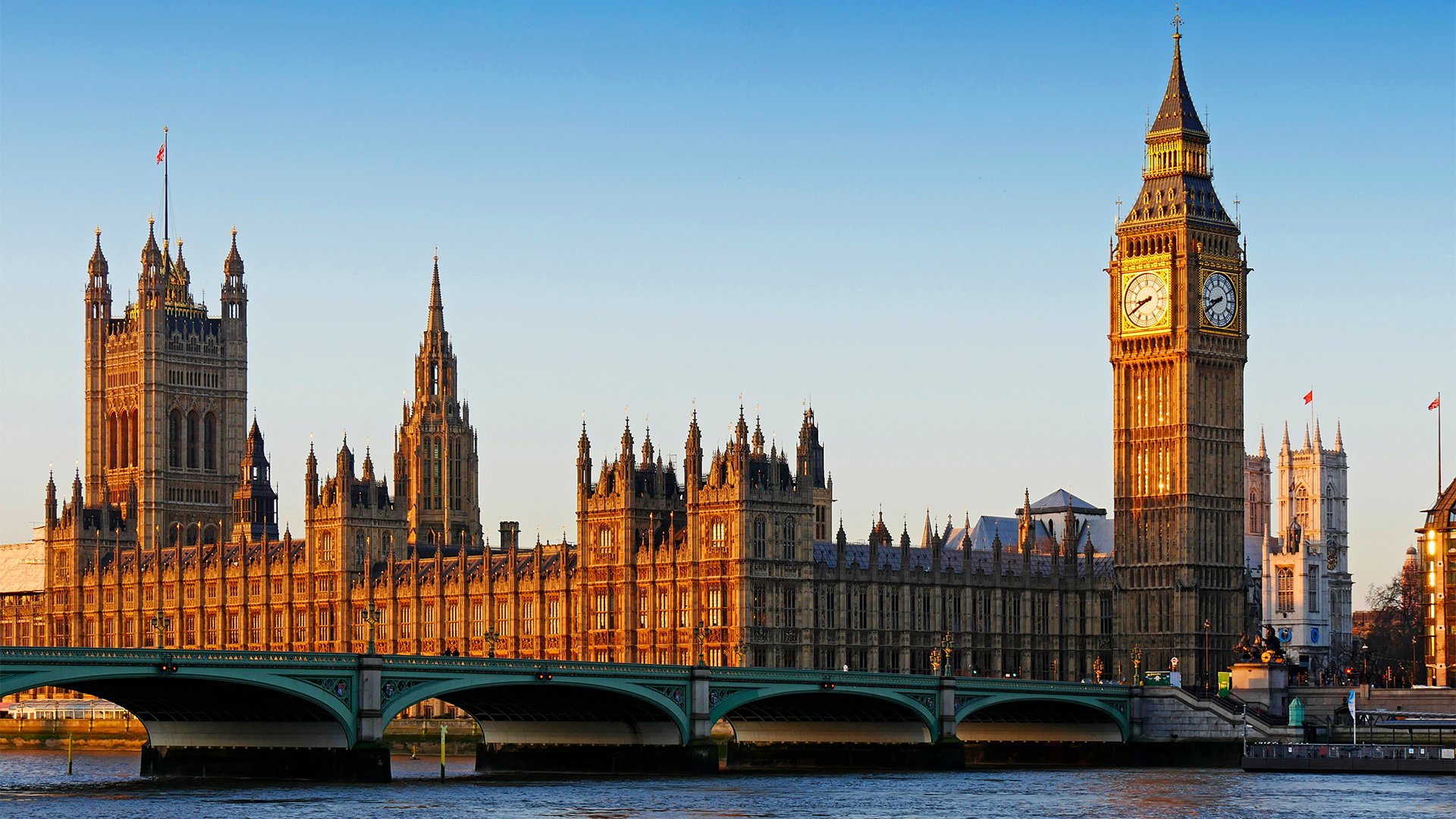 UK government confirms October cyber breach: Everything we know so far
UK government confirms October cyber breach: Everything we know so farNews Details around Foreign Office hack remain sparse and government says it's unclear who is behind the attack
-
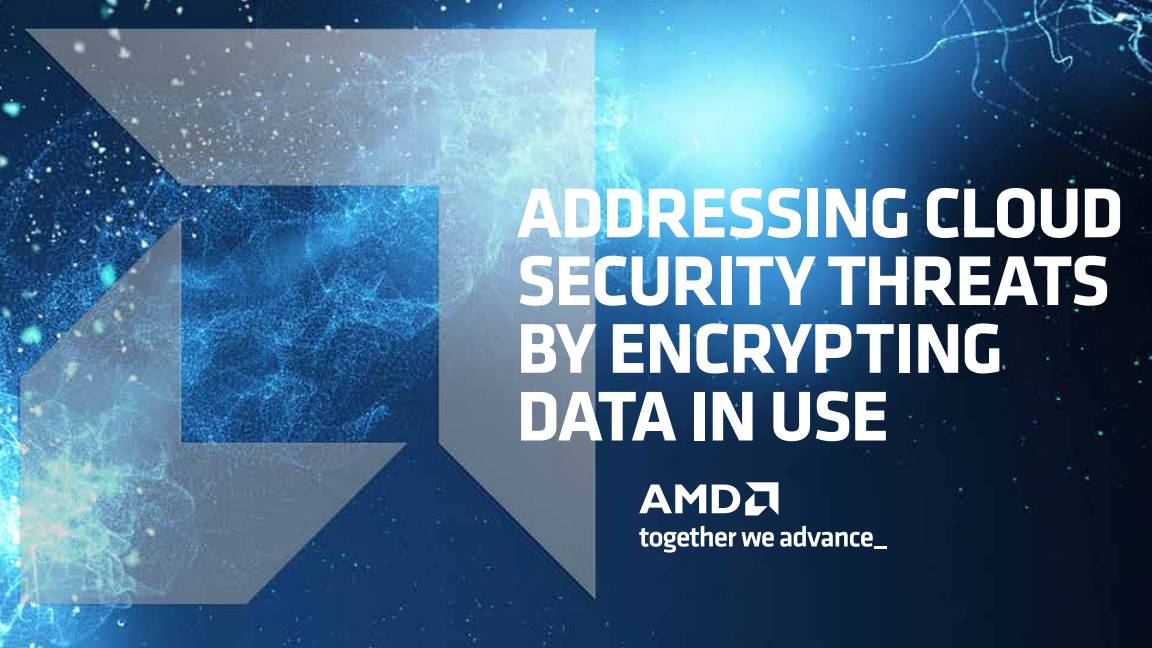 Addressing cloud security threats by encrypting data in use
Addressing cloud security threats by encrypting data in usewhitepaper How AMD Infinity Guard helps address security threats in the cloud and virtualized environments
-
 Quantitative analysis of a prefabricated vs. traditional data center
Quantitative analysis of a prefabricated vs. traditional data centerWhitepaper Apples to apples cost analysis between data centre types
-
 Battery technology for single phase UPS systems: VRLA vs. Li-ion
Battery technology for single phase UPS systems: VRLA vs. Li-ionWhitepaper An overview of li-ion batteries in comparison to VRLA batteries for singlephase UPS applications
-
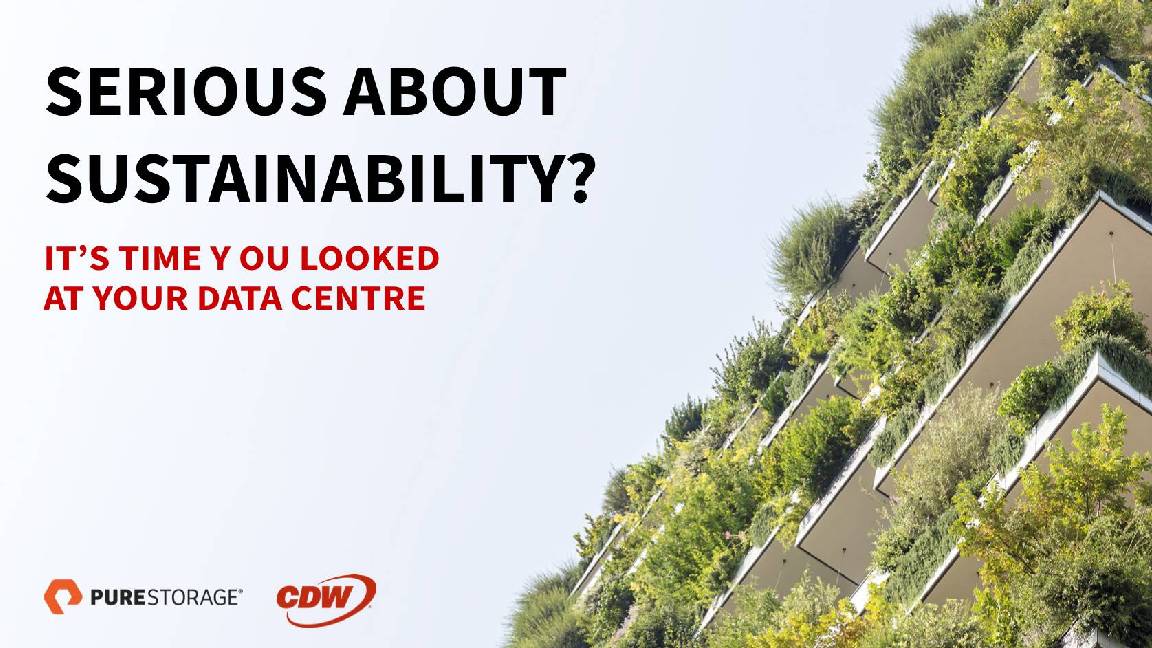 Serious about sustainability?
Serious about sustainability?whitepaper It’s time you looked at your data centre
-
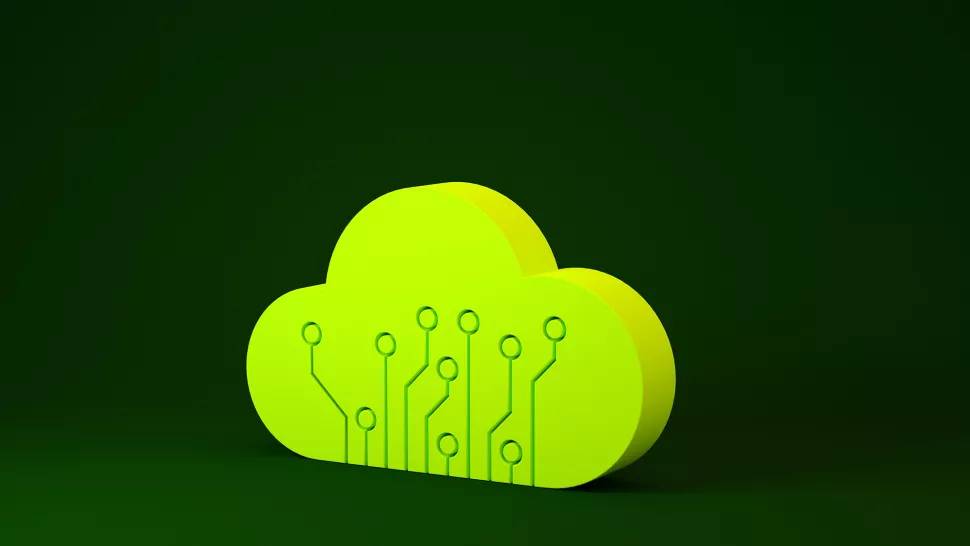 Implementing sustainable storage infrastructure
Implementing sustainable storage infrastructureWhitepaper Understand what to look for from vendors and make better storage infrastructure purchasing decisions.
-
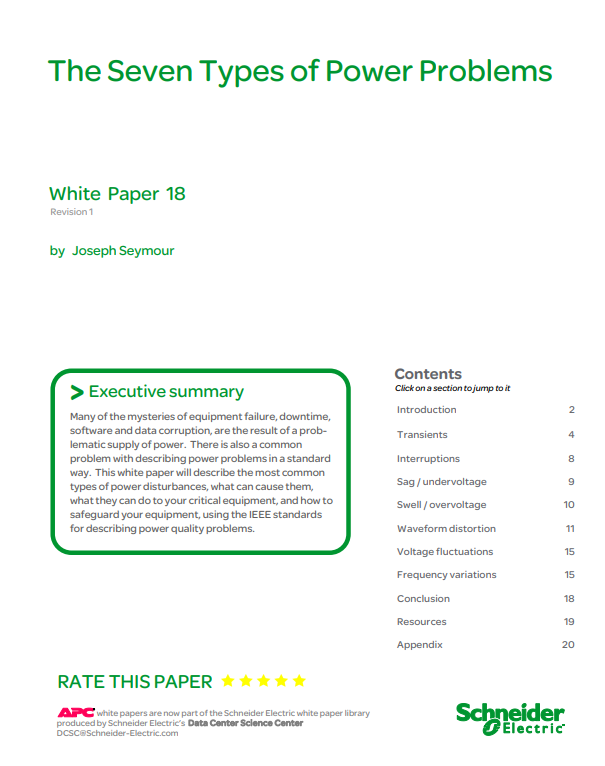 The seven types of power problems
The seven types of power problemsWhitepaper The most common types of power disturbances and how to safeguard your equipment
-
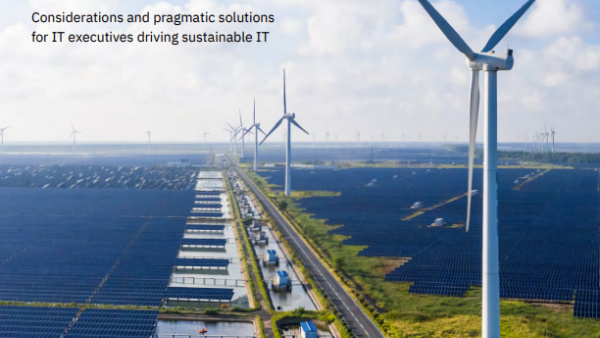 IT best practices for accelerating the journey to carbon neutrality
IT best practices for accelerating the journey to carbon neutralityWhitepaper Considerations and pragmatic solutions for IT executives driving sustainable IT
-
 Gartner predicts energy crisis will hit data centre budgets by 40% or more
Gartner predicts energy crisis will hit data centre budgets by 40% or moreNews Larger cloud providers have no intention to increase customer fees, for now

